Anyway, after Cappadocia, I flew to Selcuk (in a plane, not a balloon). I ended up spending three nights there, which was one night too many. For me, there was really only one day worth of stuff to do in Selcuk - the ancient city of Ephesus, the ruined Temple of Artemis, the Ephesus Museum and the ruined St. John Basilica all fit handily into one day for me, and then I just sat around and did nothing the second day. I thought on the second day maybe I would go to the beach or take the bus to a nearby village that is supposed to be cute, but I couldn't quite delazify myself so I just hung around Selcuk and read. Which, really, there are worse things I could do with my time. It was nice.
Anyways, Ephesus! The best-preserved classical city in Turkey, and one of the best-preserved classical cities anywhere; you may remember Ephesus from such holy books as the Letter to the Ephesians - this is who St. Paul was writing to. Ephesus was a prosperous port town with a population of 250,000 in its heyday and became the capitol of the Roman province of Asia Minor. However, the river on which the port was located changed course, the port dried up, and so did Ephesus. Here's what it looks like today:
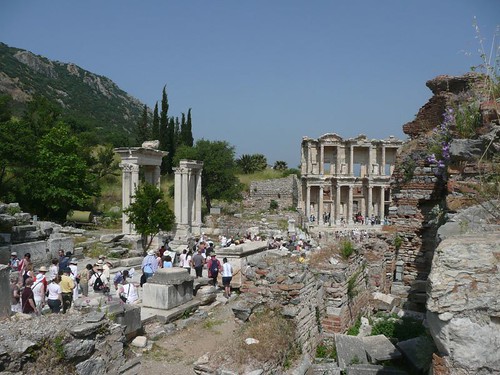
Still very busy as you see! There were thousands and thousands of people at Selcuk when I went. I went right in the middle of the day, against the advice of the guidebooks, and it was as hot and crowded as the guidebooks said. All that white stone reflects the light something fierce - it reminded me of being in Washington, DC a little bit, in that there were tourists and white marble everywhere. Some of the tourists come on cruise ships that dock at nearby Kusadasi, some come from Selcuk where I stayed, some come from further afield. It all adds up, apparently, because there were loads of people there.
Here's the library, which I am contractually obligated to take a particular interest in:
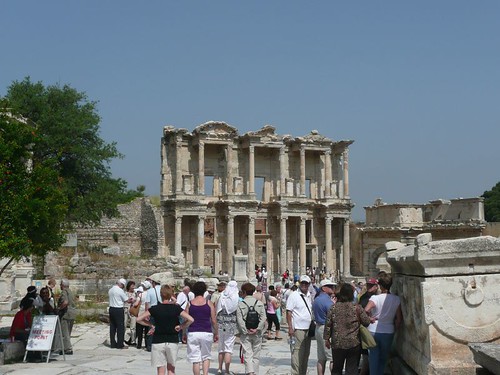
They stored thousands of scrolls there - seems like that would be even more of a hassle than storing books, and storing books is hard enough! But I guess books hadn't been invented yet? I should look it up.
Anyway, part of the reason Ephesus was so important was that it was a center for the worship of Cybele/Artemis/Diana/whatever other names she went by. Here is what's left of her temple, which was once one of the Seven Wonders of the World:
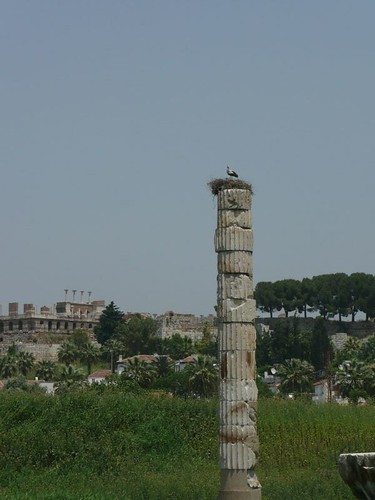
Just one column left out of, I believe, 127 original columns (note the stork nest on top of the column). There are also some foundation pool deals.
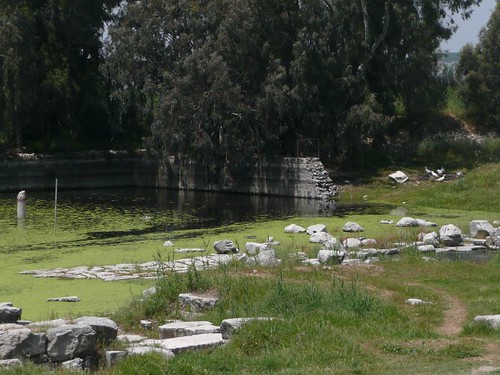
The Ephesus Museum was pretty nice - It's mostly stuff that has been recovered from digs at or near the city - statues, parts of statues, etc.:
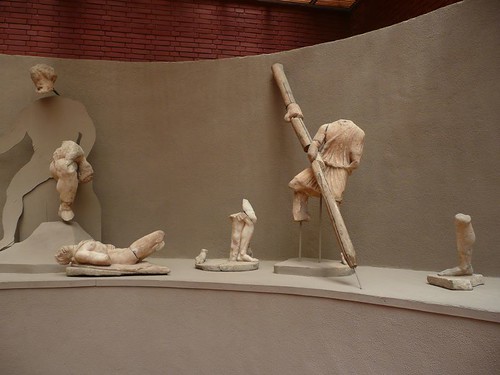
My favorite was the pipes, though:
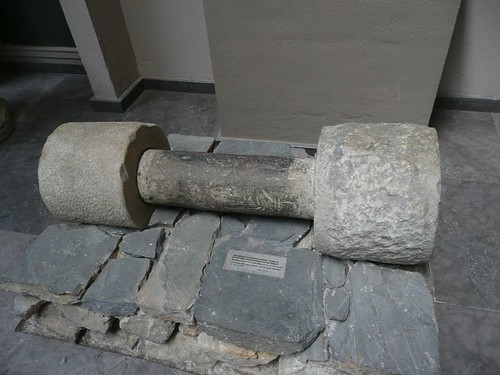
I love ancient technology!
Then I went to the Basilica of St. John, where John, the author of the eponymous Gospel, is supposed to be buried. There's pretty good evidence, as I understand it, that John did in fact spend time in and around Ephesus; the Virgin Mary is also legendarily said to have come to Ephesus to spend her last days but that's less well backed-up as I understand it. Ephesus was an important early Christian site (as you might guess from the Letters), and this basilica was built by Justinian, who also had the Aya Sofya built, over a fourth-century tomb that supposedly held John's body (what John, a contemporary of Jesus, would be doing in a fourth-century tomb is not explained).
It's a very lovely place, though:
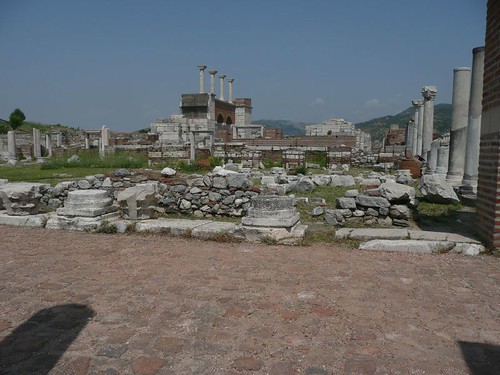
It's located right up at the top of a hill and gets nice breezes. It was basically completely ruined but has been extensively restored. I especially liked the cross-shaped walk-in baptismal font:
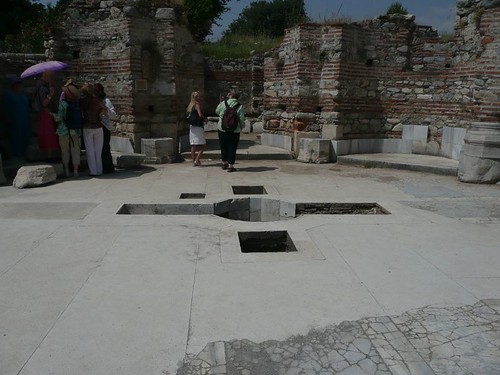
Anyway, as I say, I spent the next day pootling around the pension where I was staying and sitting in parks reading books. It was nice and vacationy, but I really rather would have spent that day in Cappadocia, where I'd come from, or Kas, where I was headed to. Next entry: Kas!
1 comment:
How gorgeous! (And I see what you mean about Washington, D.C.!)
Post a Comment